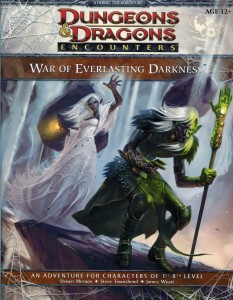While the Dungeon’s Master team enjoys some well-deserved vacation time, we’re breaking out the greatest hits and shining a spotlight on a few of our favourite articles from 2012. We’ve searched for hidden gems that our newer readers might have missed and our long-time readers will enjoy reading again. Enjoy a second look at these greatest hits from Dungeon’s Master.
Although all 5 Ws are all important I find that “who” can often be the most interesting. Finding out who drew they map can be a rich part of any adventure. Assuming that the PCs don’t want to the whole world to know they have this map and are searching for information on its origins, it can lead to some very interesting role-playing. No doubt the PCs will want to consult with experts, look up answers for themselves in lost tomes, and likely be secretive about the whole thing. Perhaps they even realize that misdirection can throw others off their trail. The point is that no matter which skills your party is good at, almost every skill can be put to use in some meaningful way when it comes to finding out who drew the map.
As almost an afterthought in the original article I mentioned providing the players with a handout. In retrospect I think this point should have been given more prominence. Players love handouts. As soon as they have something tangible in their hands they’re hooked. Provide them with a rough map, throw on some unlabelled locations, a few cryptic notes in the margins, and maybe some strange symbols that they can’t immediately decipher, and you know that the PCs will stop at nothing to solve the mystery and find the treasure.
The beauty of treasure maps is that they’re equally useful in any role-playing game, any editions, at any level, and in any campaign setting. This is a big reason why I like giving the PCs treasure maps regardless of what game I’m playing.
From October 10, 2012, Dungeon’s Master once again presents: The 5 Ws of Treasure Maps.

